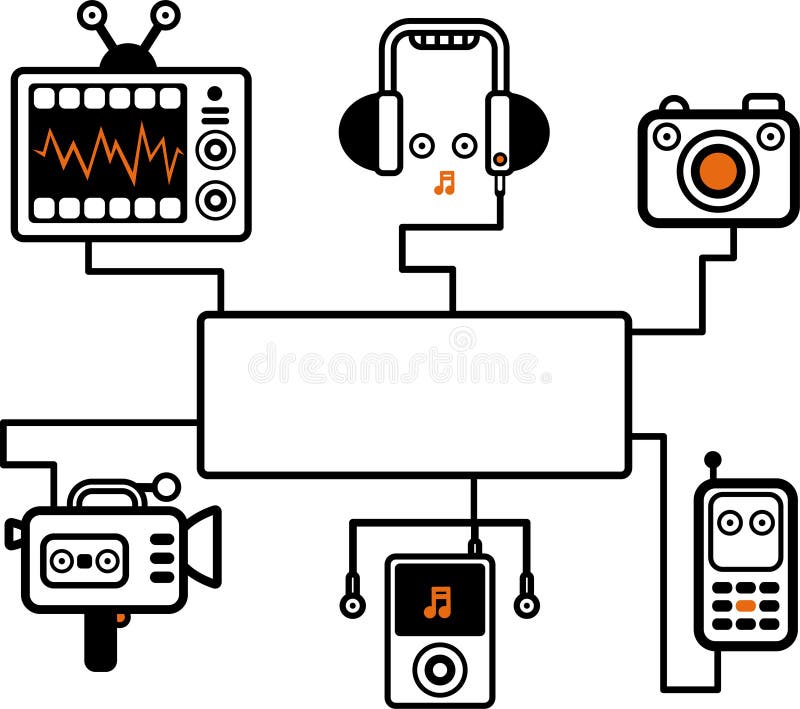Case studies showcasing audio visual charlotte nc in action
Wiki Article
Comprehending the Incorporation of Audio Visual Innovation in Today's Educational Environments
The assimilation of audio-visual innovation in instructional settings has actually transformed the training and learning process. Educators currently have access to tools that cater to numerous finding out designs, enhancing trainee involvement and partnership. However, the consolidation of these technologies provides both possibilities and obstacles. Comprehending exactly how to properly apply these devices is necessary. What methods can educators use to make the most of the advantages of audio-visual modern technology in their classrooms?The Development of Audio-Visual Modern Technology in Education And Learning
As instructional needs developed over the decades, audio-visual technology went through substantial makeovers that improved the understanding setting. Tools such as movie projectors and slide programs were the primary methods of integrating visual aspects right into class. These early modern technologies offered teachers with the capability to existing details dynamically, yet they were restricted in accessibility and interactivity.With the development of videotape recorder in the 1970s, class started to integrate recorded lessons, widening the scope of instructional sources. The intro of computers in the 1980s more changed this landscape, permitting the production of multimedia discussions and interactive understanding experiences.
The increase of the web in the 1990s noted a zero hour, making it possible for real-time accessibility to a riches of audio-visual products. Today, digital devices such as interactive white boards and online understanding platforms remain to improve the academic experience, fostering engagement and cooperation among students.
Benefits of Audio-Visual Tools for Diverse Knowing Styles
Audio-visual tools play a necessary role in dealing with varied knowing designs by improving visual discovering and enhancing acoustic involvement. By including images, video clips, and sound, these technologies develop an even more inclusive educational setting. This complex strategy allows instructors to attend to the different choices and demands of trainees properly.Enhancing Visual Understanding
Interaction in the knowing procedure is considerably boosted with using audio-visual devices, dealing with different learning designs. These tools, such as video clips, infographics, and interactive presentations, supply aesthetic stimulations that assist understanding and retention. Aesthetic learners, particularly, benefit from the unification of pictures and computer animations, which can streamline complicated principles and improve understanding. Additionally, audio-visual resources can highlight real-world applications, making discovering extra relevant and appealing. By incorporating shade, activity, and noise, educators can develop a dynamic understanding setting that catches students' attention and promotes deeper cognitive links. Eventually, the calculated use audio-visual technology not just supports visual understanding however also improves the overall educational experience for varied students.Improving Auditory Engagement
A significant benefit of incorporating audio-visual devices in education is their capability to improve acoustic engagement amongst students. These tools, which include multimedia discussions, podcasts, and interactive audio aspects, cater to different learning styles, specifically benefiting auditory learners (audio visual charlotte nc). By integrating audio and narration, educators can produce immersive experiences that catch pupils' interest and strengthen understanding. This interaction is necessary, as it fosters a deeper understanding of the product and advertises retention. Furthermore, audio-visual devices can assist in joint understanding settings, motivating trainees to get involved in conversations and share their understandings. Inevitably, the incorporation of audio-visual technology not only supports auditory engagement however also improves the general instructional experience, making discovering more dynamic and efficient for all pupilsEnhancing Interaction Via Interactive Knowing

Moreover, gamification aspects, such as tests and simulations, can enhance inspiration and retention, making discovering more satisfying and efficient. These strategies not just promote cognitive interaction but likewise deal with varied knowing styles, guaranteeing that all pupils can get involved meaningfully. As a result, interactive understanding settings foster a sense of community and belonging, eventually causing enhanced scholastic results. Through the assimilation of audio aesthetic technology, teachers can transform standard class into vibrant rooms where pupils prosper and proactively form their educational trips.
Connecting Theory and Exercise With Multimedia Resources
Multimedia sources function as a vital web link in between theoretical concepts and practical application in academic settings. By boosting involvement, promoting joint knowing experiences, and supporting varied knowing designs, these tools develop an extra comprehensive and dynamic knowing environment - audio visual charlotte nc. This approach not just promotes much deeper understanding however also prepares students for real-world difficulties
Enhancing Involvement Via Multimedia
Engagement in instructional settings considerably raises when trainers incorporate multimedia resources right into their mentor approaches. The use of video clips, podcasts, and interactive presentations enhances the learning experience, enabling pupils to get in touch with the product on multiple degrees. Multimedia resources provide to numerous discovering designs, supplying aesthetic, auditory, and kinesthetic stimuli that can hold students' focus better than typical lecture techniques. Additionally, these resources can simplify complicated principles, making them more easily accessible and memorable. By incorporating multimedia, teachers can produce a vibrant classroom environment that promotes interest and motivates students. Ultimately, the strategic use of audio-visual innovation offers to link the space in between theoretical understanding and practical application, improving the educational experience for both instructors and trainees.Helping With Collaborative Understanding Knowledge
Various studies indicate that joint understanding experiences markedly improve pupil results when integrated with multimedia sources. Multimedia devices assist in interaction among students, permitting them to participate in analytic and critical assuming jointly. By using video clip conferencing, collective systems, and interactive presentations, instructors develop environments for team effort and shared knowing. These modern technologies enable pupils to interact their concepts successfully and receive immediate responses, cultivating a deeper understanding of the subject issue. Furthermore, multimedia sources can offer complicated concepts in even more digestible styles, advertising conversation and partnership. Consequently, the combination of collective learning and audio-visual modern technology not only enriches the instructional experience yet likewise prepares pupils for real-world team effort dynamics, highlighting the importance of participation and collective knowledge building and construction.Supporting Diverse Learning Styles
While traditional training techniques frequently satisfy a minimal variety of discovering preferences, the assimilation of audio-visual technology uses a more inclusive method to education and learning. By employing multimedia sources such as videos, interactive simulations, and electronic presentations, educators can resolve different finding out styles, including visual, auditory, and kinesthetic. This adaptability enables distinguished direction, making it possible for students to involve with material in manner ins which resonate with their individual choices. Furthermore, audio-visual tools can facilitate deeper understanding by supplying several representations of intricate concepts. As an outcome, students that may have problem with conventional approaches can locate alternative paths to success, fostering a much more equitable discovering setting that supports academic achievement for all learners.Obstacles in Executing Audio-Visual Technology
Audio-visual technology holds wonderful guarantee for boosting academic experiences, its implementation typically runs into significant obstacles. One primary concern is the economic worry related to getting and keeping such devices, which can strain spending plans, particularly in underfunded institutions. Additionally, insufficient training for educators can hinder efficient assimilation, leaving them ill-prepared to use the modern technology completely. Technical problems, such as software application malfunctions and compatibility issues, might also disrupt lessons and frustrate both instructors and students. Varying levels of student access to technology outside the classroom can develop variations in discovering possibilities. Lastly, the potential for over-reliance on innovation might take away from vital mentor methods, ultimately restricting the educational experience. Resolving these obstacles calls for a detailed technique, including sufficient financing, professional growth, and fair access to resources, to ensure that audio-visual innovation can be leveraged effectively in today's instructional setups.Best Practices for Integrating Technology in the Classroom

In addition, fostering an interactive atmosphere through collective tools encourages student involvement and engagement. Utilizing varied audio-visual resources provides to various discovering styles, fitting visual, acoustic, and kinesthetic learners. Routinely evaluating the impact of technology on trainee understanding assists educators refine their strategies and adapt to changing requirements. Entailing trainees in the selection of technology promotes possession and inspiration. By sticking to these best methods, educators can create a dynamic classroom environment that successfully integrates innovation and improves the instructional experience for all students.
The Future of Audio-Visual Technology in Education
As class significantly embrace innovation, the landscape of audio-visual tools in education remains to evolve (audio visual charlotte nc). Future innovations are anticipated to concentrate on greater interactivity and personalization, enabling instructors to customize discovering experiences to private student requirements. Developments such as enhanced truth (AR) and digital reality (VR) will likely offer immersive understanding atmospheres, enhancing pupil engagement and understanding
Moreover, expert system (AI) is poised to play a substantial function in audio-visual innovation by supplying real-time responses and adaptive learning pathways. This integration might assist educators identify and resolve student difficulties better. Cloud-based systems will certainly help with less complicated accessibility to resources and collaboration among pupils and teachers, no matter area.
In enhancement to these technological advances, professional development for instructors will be vital, ensuring they are outfitted to utilize these tools efficiently. In general, the future of audio-visual technology in education and learning assures to produce more dynamic, inclusive, and impactful understanding experiences.
Regularly Asked Inquiries
How Can Teachers Choose the Right Audio-Visual Devices for Their Classrooms?
Picking ideal audio-visual devices requires instructors to evaluate their academic objectives, think about student needs, assess readily available innovation, and seek referrals from peers or specialists, making certain devices properly boost understanding and engagement within their details class environment.What Spending plan Factors to consider Are There for Carrying Out Audio-Visual Modern Technology?
Budget here plan factors to consider for carrying out audio-visual technology consist of initial acquisition prices, maintenance expenditures, training for team, and possible software program licensing charges. Additionally, long-term investment in updates and replacements should additionally be factored into financial planning.Exist Specific Training Resources for Teachers on Audio-Visual Equipment?
Several establishments provide training resources for instructors on audio-visual tools, including online training courses, workshops, and educational overviews. These resources aim to boost teachers' abilities and confidence in efficiently integrating technology right into their training techniques.How Do We Gauge the Efficiency of Audio-Visual Modern Technology in Learning?
Measuring the performance of audio-visual modern technology in discovering involves examining student interaction, understanding, retention rates, and total scholastic efficiency. Studies, assessments, and observational studies can give important understandings right into its effect on educational results.What Are Typical Misunderstandings Concerning Audio-Visual Innovation in Education?
Usual misconceptions regarding audio-visual innovation in education include the belief that it guarantees involvement and finding out end results, in addition to the presumption that all students profit just as, ignoring private understanding preferences and requirements.Report this wiki page